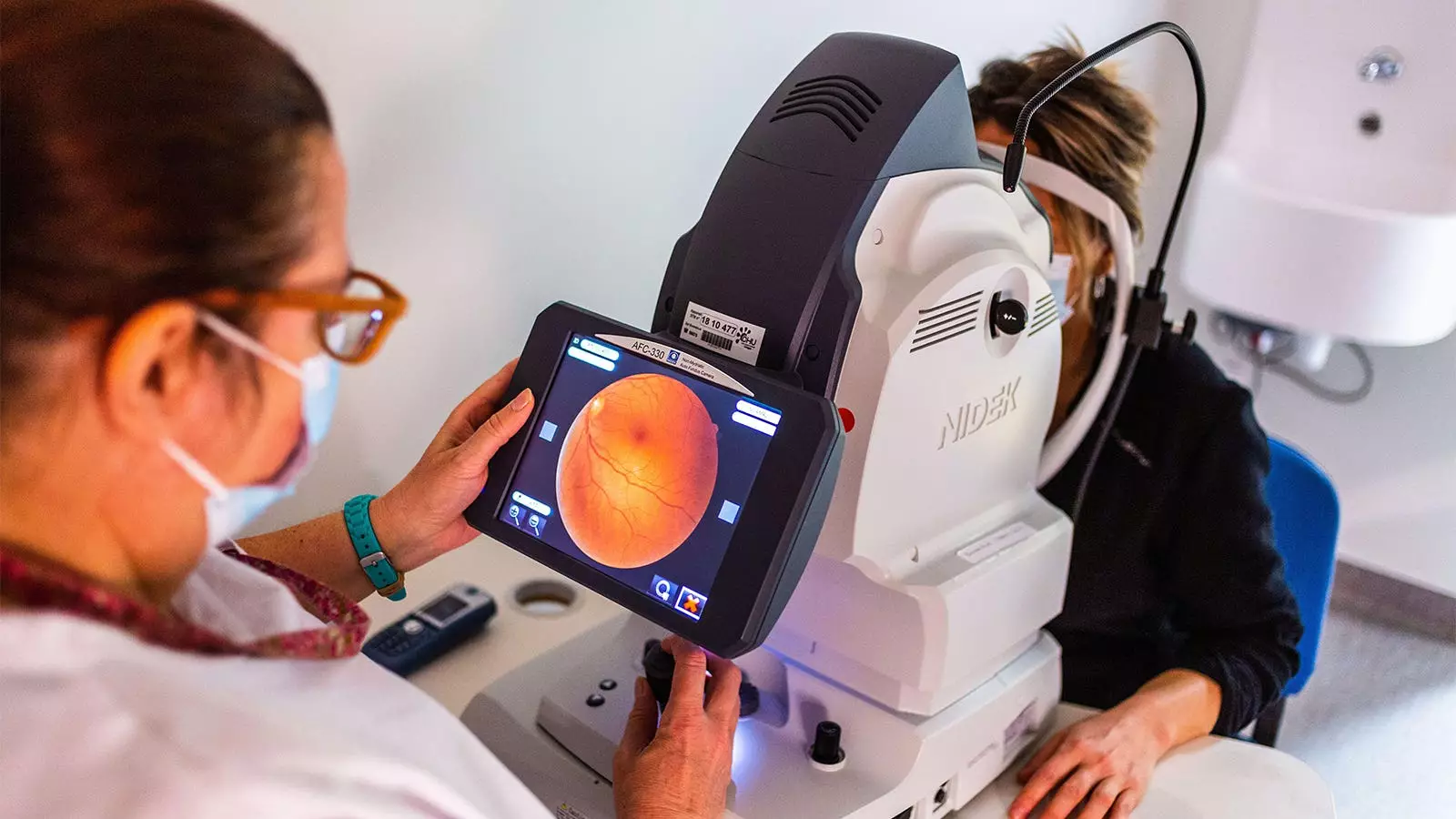Neurofibromatosis type 1 (NF1) is a complex genetic disorder that manifests in various ways. However, the recent case of a 38-year-old woman with NF1 developing choroidal Yasunari nodules in both eyes puzzled Danish clinicians. With no prior history of systemic vasculopathy but a long-standing peripheral retinal capillary nonperfusion affecting her left eye, the patient’s condition presented a unique challenge for the medical team at Rigshospitalet in Glostrup, Denmark.
Visualizing the Hidden
Choroidal Yasunari nodules are notoriously difficult to identify during ophthalmoscopic examinations. Nevertheless, through the utilization of near-infrared photography, the Danish clinicians gained newfound visibility into the patient’s condition. The examination revealed no additional pathologies in the patient’s right eye, and her corrected visual acuity remained at a perfect 20/20 in both eyes.
A Look Into the Past
Comparing the findings of the recent assessment with an examination conducted three years prior, the medical team noticed signs of thinning in the central retinal artery and branching arcades. Additionally, there was the observation of a chorioretinal anastomosis in the superotemporal macula, originating from a photocoagulation scar. This anastomosis formed a spiral-shaped choroidal vessel, connecting both arterial and venous vessels from the superior arcades, along with a vein from the inferior arcade. The interconnections facilitated the perfusion of the arterial supply of the central retina, including the fovea.
The New Pathway Discovered
To confirm the presence of retrograde arterial supply through the anastomosis, fluorescein angiography was employed. The imaging sequences unequivocally demonstrated rapid filling of the temporal macular vasculature through retrograde circulation via the laser-induced chorioretinal anastomosis (LICRA) in the superotemporal macula, followed by anterograde filling of the central retinal artery branches that brought perfusion to the nasal retina.
The Danish clinicians speculated on the mechanisms behind the development of this chorioretinal anastomosis. They theorized that the combination of hydrostatic pressure gradient over the retinal pigment epithelium towards the retina and vascular endothelial growth factor production associated with retinal capillary nonperfusion played key roles in its formation.
Retinal vascular abnormalities have been shown to affect a significant percentage of individuals with NF1. While severe retinal vascular abnormalities are rare in NF1, cases of peripheral or central retinal vascular occlusion, neovascular glaucoma, or occlusion of the central retinal artery have been documented in some patients. These cases commonly occur in younger patients with impaired arterial inflow and worsening retinal capillary nonperfusion.
A Glimmer of Hope
Fortunately for this patient, choroidal perfusion remained intact, suggesting that the vasculopathy primarily affected the arteries distally to the branching of the posterior ciliary arteries from the ophthalmic artery. The treatment with high-energy photocoagulation, although resulting in defects in the Bruch’s membrane, mediated the development of the anastomosis. This phenomenon serves as the foundation for the treatment of nonischemic central retinal vein occlusion (CRVO), aiming to normalize venous pressure in the retina by creating auxiliary flow between the occluded high-pressure retinal venous circulation and the unobstructed low-pressure choroidal venous circulation.
A Matter of Success
While this treatment approach has displayed promise, it is vital to note that not all attempts to create an anastomosis have been successful. In fact, only two out of three attempts prove fruitful, with procedure-related complications necessitating secondary surgeries for every third patient. The creation of LICRA in eyes with ischemic CRVO has proven particularly challenging, likely due to significant damage sustained by endothelial cells from the effects of ischemia and venous thrombosis on retinal circulation.
A Different Perspective
In the unique case presented, the incidental LICRA resulting from treatment may have played a crucial role in preserving the retina and maintaining 20/20 visual acuity. A distinguishing factor in this instance is that the chorioretinal anastomosis brings inflow of oxygenated blood to the retina instead of facilitating outflow from congested retinal veins to the choroid.
The perplexing case of choroidal Yasunari nodules in a patient with NF1 has shed light on the complexities of retinal vascular abnormalities in this genetic disorder. The discovery of a laser-induced chorioretinal anastomosis and its role in maintaining visual acuity highlights the potential for novel treatment approaches in managing retinal occlusions. As medical knowledge continues to advance, further insights into NF1 and its associated ocular manifestations may pave the way for improved patient care and outcomes.


Leave a Reply